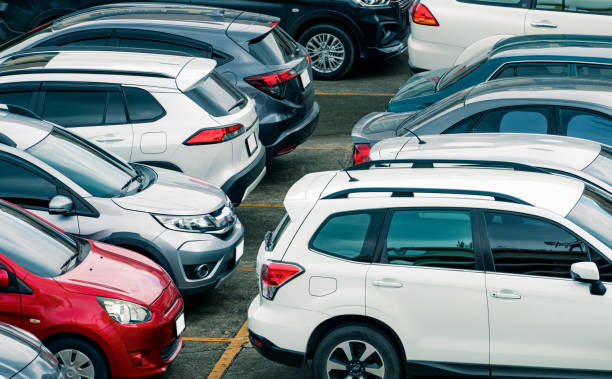
Two years since the beginning of the first Covid lockdown, the car finance sector is returning to form, but it looks very different to how it did before. Chris Farnell reports
The immediate impact of the pandemic has been well documented by now, with the motor finance industry, in particular, having to step up to support its customers.
“What happened with Covid, there was really no blueprint to deal with it. A lot of companies do disaster recovery plans, but this wasn’t on many people’s agenda so there’s been a lot of learning from that,” says Peter Cottle, Practice Leader for the Automotive Sector for GrowCap Ltd.
“At Black Horse during Covid we provided relief to about 161,000 customers via payment holidays, as well as providing extensive forbearance on dealer stocking facilities,” says Richard Jones, Managing Director, Motor Finance & Leasing, for Lloyds Banking Group. “For those customers who wanted to finance a car during lockdown, we also provided remote signing options.”
Post-Covid?
Even now it feels wrong to use the phrase “post-Covid” era, as cases in the UK are climbing once again. But by now a kind of new normal has been established, and the world of 2019 seems a long way away. The journey to the new normal has been a long one.
“The motor finance sector faced significant challenges during the Covid-19, but like everyone, adapted to best meet the needs of our customers,” says Jones. “The flexibility shown has stood the sector in good stead and default levels are currently as expected while order books became buoyant during the later lockdowns.”
How well do you really know your competitors?
Access the most comprehensive Company Profiles on the market, powered by GlobalData. Save hours of research. Gain competitive edge.

Thank you!
Your download email will arrive shortly
Not ready to buy yet? Download a free sample
We are confident about the unique quality of our Company Profiles. However, we want you to make the most beneficial decision for your business, so we offer a free sample that you can download by submitting the below form
By GlobalData“My own view is it’s back to a new normal. It hasn’t had the long-last effect some people thought it might, but it seems to be below expectations,” says Cottle. “Volumes of business are reasonable but very much affected by the lack of product in new cars and equally in the used car environment.”
One thing everyone can agree on is that demand is very much still present in the market.
“Positively, there is clearly demand and it is clear from our own order book and recent SMMT registration figures that consumers are wanting to make more environmentally friendly choices,” Jones tells us. “And while we continue to see supply challenges in the new car market, this has driven very strong used car sales.”
“I think the vast majority of companies have come through quite well,” Cottle points out. “The ones that suffered are the ones that had to stop trading for a period of time. They will be on a slower recovery curve. But larger and captive finance companies came through remarkably well.”
A differently shaped economy
With the industry and the market alike having at least adapted to doing business against the background of an ongoing pandemic, even two years later we are still feeling the aftershocks of the first lockdown.
“The most notable difference is the customer’s comfort and preference dealing with a combination of physical and digital buying journeys for both cars and financing solutions, and I expect that to continue,” says Jones.
“There are fewer face-to-face operations between the funder, dealer partner and broker partners. We’ve all morphed into using Teams and Zoom,” Cottle agrees. “The industry has found that while face-to-face interactions are important from a relationship viewpoint, particularly with a new relationship, people still want to work with people they trust and like regardless of technology. What has been clear is the industry found they can be effective with less face-to-face contact.”
As well as shifts such as the move into online interactions, the industry has also been hit by supply chain issues hot on the tail of the pandemic.
“In the near term, we have the fallout of manufacturing logistics seeing major disruption. What is currently happening is the unwinding of that to free up new vehicle supply and balance the demand,” Jones explains. “By the end of 2022, I expect we will be in a three-year total deficit of circa 1.5 million new vehicles compared to pre-Covid-19 levels. This will take time to unwind fully and will drive volatility in used pricing versus normal seasonal patterns.”
Before starting to address those longer-term consequences, there are more immediate issues for the finance sector to contend with, however.
“I suppose the challenge is if you ignore Covid itself, what has happened since Covid is more related to the economy than the pandemic itself. There is clearly some stress in the economic system,” Cottle says.
The cost of living as consumers of utilities and fuel has risen dramatically, and funders are beginning to look at customers in terms of their affordability as the impact of Covid interacts with the cost of living rising by 7%.
“Now we have to contend with major inflationary pressures, rising energy prices, rising car prices of course and rising interest rates, all of which significantly impacts consumer confidence and disposable incomes,” says Jones.
With these pressures hitting customers across the board, it is not surprising that the industry is reassessing how it measures customers’ suitability for finance.
“There is also growth in open banking in terms of credit assessment, again based on the fact that not only do you need to have the customer’s good credit rating, you also need to know about the affordability,” Cottle points out. “They are two quite different things- credit rating doesn’t always mean you can make the repayments, so there is a strong emphasis now on affordability.”
Supply and Demand
At the same time Jones reminds us that while demand is high now, the market cannot take that for granted.
“It really is hard to gauge how all of this comes together to affect demand in the medium term, but in 2022 I expect demand to remain ahead of supply,” he says. “We shouldn’t underestimate that these combined effects fall very differently across customer segments. Demand is strong now, but it may be more fragile than we think.”
“The other thing Covid did was make people think quite carefully about their motoring requirements,” Cottle reminds us. “They’ve done fewer miles during Covid, families running two cars are wondering if they need two cars. That’s an unknown influence at the moment but could put pressure on volumes if they’re keeping cars longer or decide they don’t need two.”
The one thing that is certain is that even has the industry rebuilds and adapts to the new status quo, there are no guarantees.
“One of the big lessons from the last two years is that we live in a volatile world,” Jones says. “Lives can change very quickly so the ability to adjust to new social and financial circumstances very quickly is essential.”
The state of UK leasing two years since Covid
Consumer car finance volumes up 43% in January: FLA
The way forward for motor finance two years on from Covid







